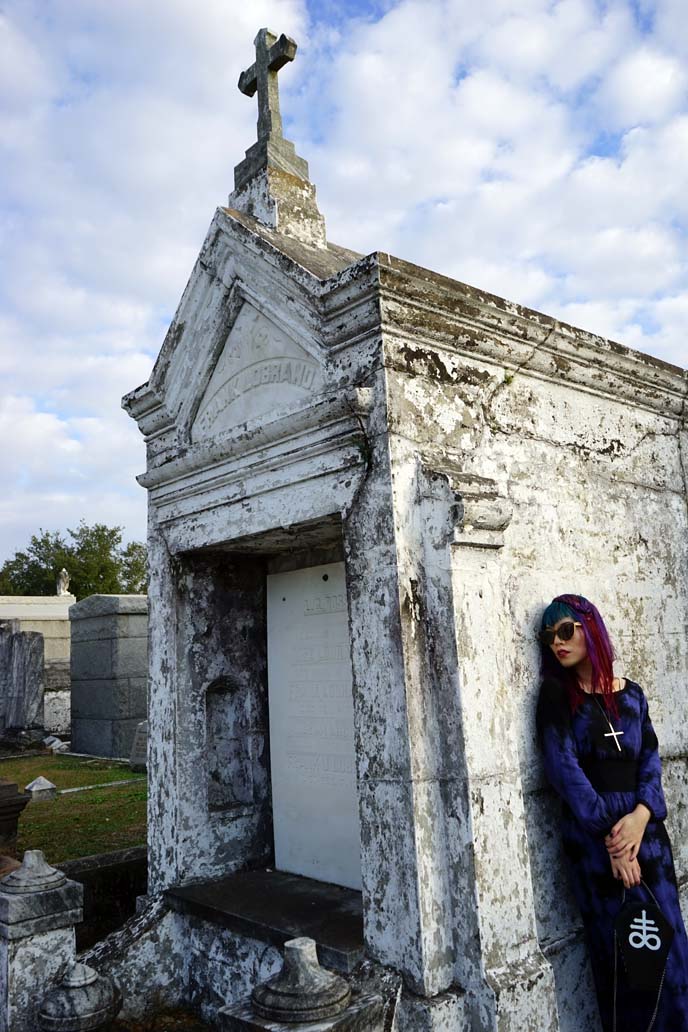
Temperatures reaching upward of 150 to 200 degrees in the tombs served as a natural cremation process. City records show over 41,000 deaths due to the deadly viral scourge carried by mosquitoes breeding like wildfire in the surrounding swamps.īurials were performed quickly to avoid any prolonged contact with what was believed to be an “infected body”. In 1905, the last major outbreak occurred in New Orleans. In 1878, thousands died in a yellow fever epidemic that spread through the Mississippi Valley and its tributaries. However, this is where the inside scoop on some of the graveyard’s history gets very fascinating.

Due to its prime location near the heart of the city and its French Quarter, needs for the burial site grew exponentially over time.а Above-ground vaults constructed in the 18thаand 19thаcenturies housed multiple family members upon their deaths.ĭue to recent-years desecration of the tombs, the cemetery once open to the public is now only accessible with a licensed tour guide. 1 was divided into sections for Catholics, non-Catholics, and Negroes, possibly referring to the many “gens de couleur libres” (free people of color) who were also buried here, all according to their religion. Even famous actor Nicholas Cage has reserved his final resting place in a bizarre pyramid-shaped tomb here merely awaiting his arrival. the Board of Education that the establishment of separate schools for blacks and whites was unconstitutional. Though the higher court upheld segregation, it was in 1954 that the highest court in the land ruled in Brown vs. Supreme Court segregation decision Plessy vs. Others buried here are 9th century international chess champion Paul Morphy, and Homer Plessy, one of the early founders of the Civil Rights Movement and plaintiff in the landmark U.S. Though she and her family escaped to France, many believe she returned to New Orleans prior to her death and remains here still to this day. Police and fire marshals found evidence of her torturing and brutally murdering her own personal slaves. But Madame LaLaurie’s real and quite horrifying persona was revealed after a fire broke out in her residence. The reported remains of Madame Delphine LaLaurie, New Orleans Creole and socialite are also in this cemetery. A father and long-term partner to a woman of color, Lafon turned to piracy and smuggling after the Battle of New Orleans in 1815, even working with notorious pirate Jean Lafitte. аA New Orleans resident and wealthy philanthropist, Lafon lived an intriguing double life. 1 also holds the crypt of well-respected French-born architect and engineer Barthelemy Lafon. As if she still has power beyond the grave, visitors leave offerings to her spirit in return for what they hope will be blessings or wishes granted.
NEW ORLEANS GRAVEYARD FREE
Believers and non-believers alike make pilgrimages to the tomb of this mysterious free woman of color who knew many secrets of New Orleans high society. Many claim to have seen the ghost of infamous Voodoo Queen and Priestess Marie Laveau, one of the most notable people interred within.
NEW ORLEANS GRAVEYARD PLUS
The quiet, peaceful cemetery is eerily beautiful, even in the daytime.Įstablished in the late 1700s, the cemetery, listed on the National Register of Historic Places, is the city’s oldest active and reportedly most haunted of its 40 plus graveyards.

Many of these historical burial sites have fallen into crumbling disrepair, but a restoration project underway is bringing New Orleans cities of the dead back to life.а аAnd it’s a very worthy cause for these magnificent tombs encrypt the flower of New Orleans’ French, Italian, Portuguese, and Spanish societies, showcasing the impressive diversity of this incredibly multicultural city.

1 and housed in its labyrinth of more than 700 elaborate above-ground crypts.а These ornate mausoleums are packed closely together, separated only by narrow tortuous paths. Instead of the marble and granite headstones set in verdant hillsides under massive oaks, indeterminate thousands of New Orleans’ deceased are buried in St. New Orleans’ swampy low terrain sits one to two feet below sea level.а Here, underground graves were quickly discarded by early colonists after heavy rains sent coffins popping back up to the surface and floating down the streets of the Big Easy. that bury their dead “six feet under” so to speak. Mark Twain once referred to them as “Cities of the Dead” and nowhere is the term more appropriate than in New Orleans.Ĭemeteries here are unlike others across the U.S.


 0 kommentar(er)
0 kommentar(er)
